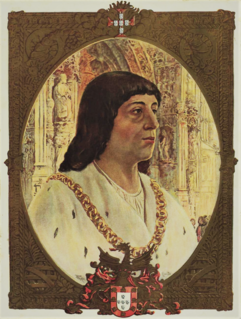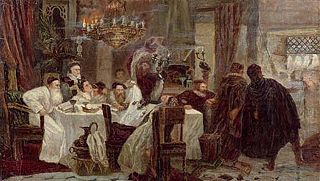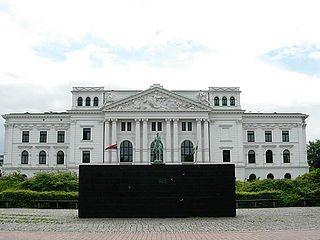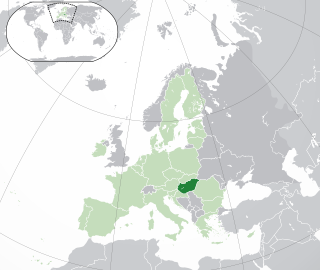Tallage or talliage may have signified at first any tax, but became in England and France a land use or land tenure tax. Later in England it was further limited to assessments by the crown upon cities, boroughs, and royal domains. In effect, tallage was a land tax.

Manuel I, known as the Fortunate, was King of Portugal from 1495 to 1521. A member of the House of Aviz, Manuel was Duke of Beja and Viseu prior to succeeding his cousin, John II of Portugal, as monarch. Manuel ruled over a period of intensive expansion of the Portuguese Empire owing to the numerous Portuguese discoveries made during his reign. His sponsorship of Vasco da Gama led to the Portuguese discovery of the sea route to India in 1498, resulting in the creation of the Portuguese India Armadas, which guaranteed Portugal's monopoly on the spice trade. Manuel began the Portuguese colonization of the Americas and Portuguese India, and oversaw the establishment of a vast trade empire across Africa and Asia.

Sephardi Jews, also known as Sephardic Jews, Sephardim, or Hispanic Jews by modern scholars, are a Jewish ethnic division originating from traditionally established communities in the Iberian Peninsula. The term "Sephardim" also sometimes refers to Mizrahi Jews of Western Asia and North Africa. Although most of this latter group do not have ancestry from the Jewish communities of Iberia, the majority of them were influenced by the Sephardic style of liturgy and Sephardic law and customs from the influence of the Iberian Jewish exiles over the course of the last few centuries. This article deals with Sephardim within the narrower ethnic definition.

Marranos were Spanish and Portuguese Jews living in the Iberian Peninsula who converted or were forced to convert to Christianity during the Middle Ages, yet continued to practice Judaism in secrecy.

Crypto-Judaism is the secret adherence to Judaism while publicly professing to be of another faith; practitioners are referred to as "crypto-Jews".

Cochin Jews are the oldest group of Jews in India, with roots that are claimed to date back to the time of King Solomon. The Cochin Jews settled in the Kingdom of Cochin in South India, now part of the state of Kerala. As early as the 12th century, mention is made of the Jews in southern India. The Jewish traveler Benjamin of Tudela, speaking of Kollam (Quilon) on the Malabar Coast, writes in his Itinerary:
"...throughout the island, including all the towns thereof, live several thousand Israelites. The inhabitants are all black, and the Jews also. The latter are good and benevolent. They know the law of Moses and the prophets, and to a small extent the Talmud and Halacha."

Altona is the westernmost urban borough (Bezirk) of the German city state of Hamburg, on the right bank of the Elbe river. From 1640 to 1864 Altona was under the administration of the Danish monarchy. Altona was an independent city until 1937. In 2016 the population was 270,263.

The history of the Jews in England goes back to the reign of William the Conqueror. Although it is likely that there had been some Jewish presence in the Roman period, there is no definitive evidence, and no reason to suppose that there was any community during Anglo-Saxon times. The first written record of Jewish settlement in England dates from 1070. The Jewish settlement continued until King Edward I's Edict of Expulsion in 1290. After the expulsion, there was no overt Jewish community until the rule of Oliver Cromwell. While Cromwell never officially readmitted Jews to the Commonwealth of England, a small colony of Sephardic Jews living in London was identified in 1656 and allowed to remain.
The Edict of Expulsion was a royal decree issued by King Edward I of England on 18 July 1290 expelling all Jews from the Kingdom of England. Edward advised the sheriffs of all counties he wanted all Jews expelled by no later than All Saints' Day that year. The expulsion edict remained in force for the rest of the Middle Ages. The edict was not an isolated incident, but the culmination of over 200 years of increasing antisemitism. The edict was overturned during the Protectorate more than 350 years later, when Oliver Cromwell permitted Jews to return to England in 1657.
The history of the Jews in India reaches back to ancient history. Judaism was one of the first foreign religions to arrive in India in recorded history. Indian Jews are a religious minority in India who have historically lived there without any instances of anti-Semitism from the local non-jewish majority. The better-established ancient Jewish communities have assimilated many of the local traditions through cultural diffusion. While some Indian Jews state that their ancestors arrived in India during the time of the Ancient Kingdom of Judah, others identify themselves as descendants of Ancient Israel's Ten Lost Tribes who arrived earlier. Some claim descent particularly from Ancient Israel's tribe of Menashe and are referred as the Bnei Menashe. It is estimated that India's Jewish population peaked at around 20,000 in the mid-1940s, and began to rapidly decline due to their emigration to Israel after its creation in 1948.

The Alhambra Decree was an edict issued on 31 March 1492, by the joint Catholic Monarchs of Spain ordering the expulsion of practicing Jews from the Crowns of Castile and Aragon and its territories and possessions by 31 July of that year. The primary purpose was to eliminate the influence of practicing Jews on Spain's large formerly-Jewish converso New Christian population, to ensure the latter and their descendants did not revert to Judaism. Over half of Spain's Jews had converted as a result of the religious persecution and pogroms which occurred in 1391. Due to continuing attacks, around 50,000 more had converted by 1415. A further number of those remaining chose to convert to avoid expulsion. As a result of the Alhambra decree and persecution in the years leading up to the expulsion, of Spain’s estimated 300,000 Jewish origin population, a total of over 200,000 had converted to Catholicism to remain in Spain, and between 40,000 and 100,000 remained Jewish and suffered expulsion. An unknown number of the expelled eventually succumbed to the pressures of life in exile away from formerly-Jewish relatives and networks back in Spain, and so converted to Catholicism to be allowed to return in the years following expulsion.:17

Moroccan Jews constitute an ancient community. Before the founding of Israel in 1948, there were about 250,000 to 350,000 Jews in the country, which gave Morocco the largest Jewish community in the Muslim world, but by 2017 only 2,000 or so remain. Jews in Morocco, originally speakers of Berber languages, Judeo-Moroccan Arabic or Judaeo-Spanish, were the first in the country to adopt the French language in the mid-19th century, and unlike the muslim population French remains the main language of members of the Jewish community there.

The Benveniste family is an old, noble, wealthy, and scholarly Jewish family of Narbonne, France and northern Spain established in the 11th century. The family was present in the 11th to the 15th centuries in Hachmei Provence, France, Barcelona, Aragon and Castile Spain.

The history of the Jews in Hungary dates back to at least the Kingdom of Hungary, with some records even predating the Hungarian conquest of the Carpathian Basin in 895 CE by over 600 years. Written sources prove that Jewish communities lived in the medieval Kingdom of Hungary and it is even assumed that several sections of the heterogeneous Hungarian tribes practiced Judaism. Jewish officials served the king during the early 13th century reign of Andrew II. From the second part of the 13th century, the general religious tolerance decreased and Hungary's policies became similar to the treatment of the Jewish population in Western Europe.

The history of the Jews in Turkey covers the 2400 years that Jews have lived in what is now Turkey. There have been Jewish communities in Anatolia since at least the fifth century BCE and many Spanish and Portuguese Jews expelled from Spain by the Alhambra Decree were welcomed into the Ottoman Empire in the late 15th century, including regions now part of Turkey, centuries later, forming the bulk of the Ottoman Jews.

The history of the Jews in Brazil is a rather long and complex one, as it stretches from the very beginning of the European settlement in the new continent. Although only baptized Christians were subject to the Inquisition, Jews started settling in Brazil when the Inquisition reached Portugal, in the 16th century. They arrived in Brazil during the period of Dutch rule, setting up in Recife the first synagogue in the Americas, the Kahal Zur Israel Synagogue, as early as 1636. Most of those Jews were Sephardic Jews who had fled the Inquisition in Spain and Portugal to the religious freedom of the Netherlands.
The history of the Jews in Jamaica predominantly dates back to migrants from Spain and Portugal, as well as migrants from France and United Kingdom. Starting in 1309, many Jews began fleeing from Spain because of the persecution of the Holy Inquisition. When the English captured Jamaica from Spain in 1655, the Jews who were living as conversos began to practice Judaism openly. By 1611, the Island of Jamaica had reached an estimated population of 1,500 people. An estimated 75 of those people were described as "foreigners," which may have included some Portuguese Jews. Still, many Jews faced persecution from English merchants.
Jewish disabilities were legal restrictions, limitations and obligations placed on European Jews in the Middle Ages. In Europe, the disabilities imposed on Jews included provisions requiring Jews to wear specific and identifying clothing such as the Jewish hat and the yellow badge, paying special taxes, swearing special oaths, living in certain neighbourhoods, and forbidding Jews to enter certain trades. In Sweden, for example, Jews were forbidden to sell new pieces of clothing. Disabilities also included special taxes levied on Jews, exclusion from public life, restraints on the performance of religious ceremonies, and linguistic censorship. Some countries went even further and outright expelled Jews, for example England in 1290 and Spain in 1492.
The history of the Jews in Livorno, Italy has been documented since 1583, when descendants of the late 15th-century expulsions from Spain and Portugal settled in the city. They were settled initially by Sephardic Jews from Pisa. The Jewish community of Livorno, although the youngest among the historic Jewish communities of Italy, was for some time the foremost: its members achieved political rights and wealth, and contributed to scholarship in the thriving port city. Numerous Jewish schools and welfare institutions were established.

In the Iberian peninsula, the crown rabbi was a secular, administrative post occupied by a member of the Jewish community for the benefit of the governing state, and existed in the kingdoms of Castile, Aragon, Navarre and Portugal as far back as the 13th century, and is referred to as crown rabbi by historians in English, as well as by court rabbi and other terms.













